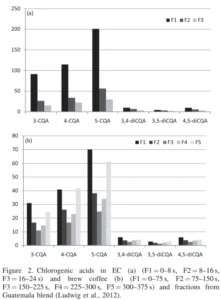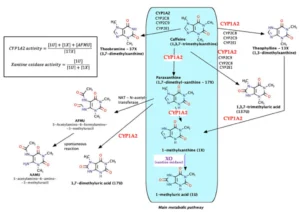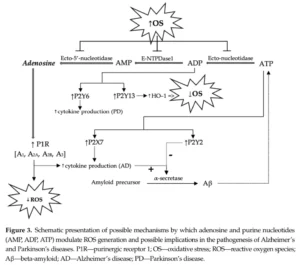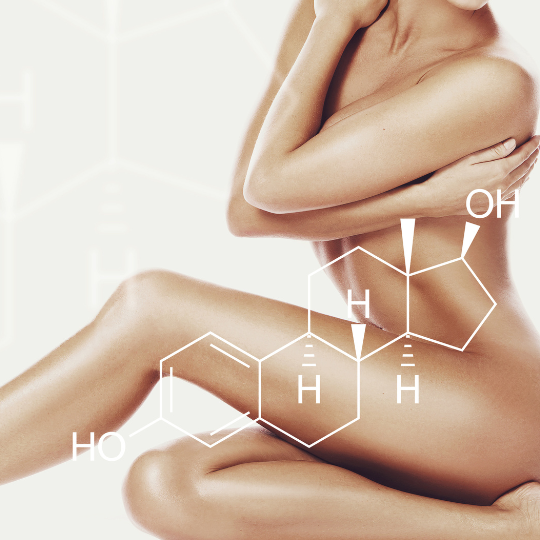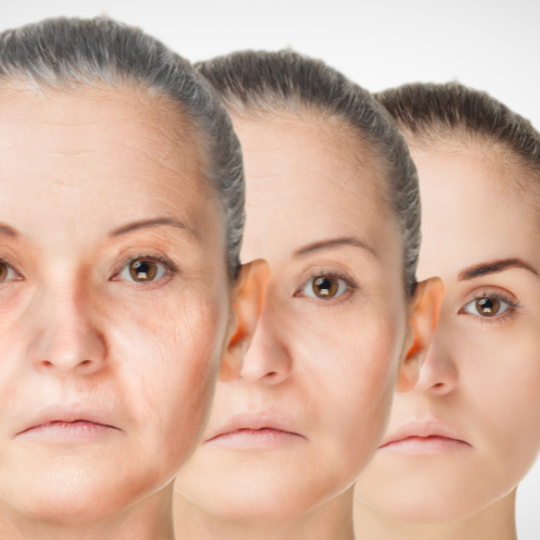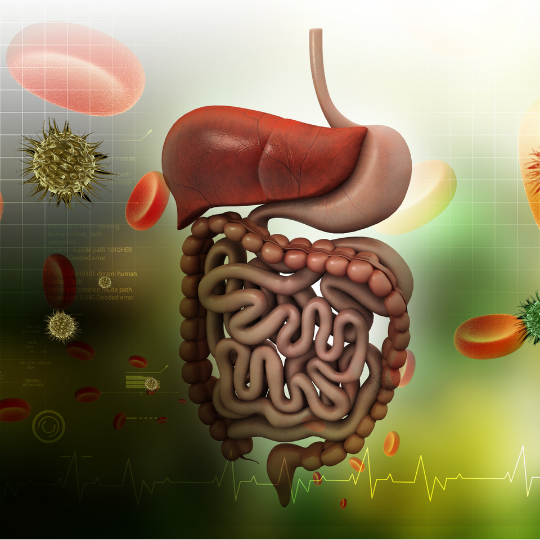Coffee & caffeine
Coffee is one of the most widely consumed beverages in the world, especially in Scandinavia and the Netherlands, where average consumption is almost double that in the rest of the world. It is appreciated mostly for its caffeine-mediated stimulating effects, but its other components seem to have a host of additional health-promoting effects. Among the most known coffee species, canephora/robusta, brevipes and stenophylla have the highest caffeine content, whereas pseudozanguebariae and humblotiana are almost caffeine-free. Comparing the two most widely cultivated and studied species, it is reported that robusta coffees are richer in caffeine and CQAs (caffeoylquinic acids) than arabica ones.
Caffeine in regular coffees ranges from 11 to 16 mg per gram of coffee, while that of decaffeinated coffees is less than 0.5 mg. Overall, caffeine content in coffee is approximately 3-4 times higher than that in tea and up to 12 times higher than that in cocoa. In terms of other components, the main acids in green coffee beans are citric, malic, quinic and chlorogenic (an ester formed between caffeic acid and quinic acid). During the roasting process quinic acid increases, while the other three acids decrease.
Coffee preparation primer
While espresso-type coffee has a higher caffeine concentration than brewed coffees, the overall caffeine content in brews is generally 4-5 times higher, due to the higher beverage volume content. As can be seen in the graphs above, chlorogenic acids are higher for shorter extraction times for both espresso types (up to 8 seconds) and brews (up to 75 seconds); however, for brew extraction times longer than 7 minutes, the levels of these compounds are almost as high as in the case of the shorter extraction times. What’s more, roasting of green coffee increases the antioxidant beneficial effects of coffee, mainly due to the increased availability of these components.
Caffeine metabolism
Caffeine is absorbed by the stomach and small intestine within 45 minutes and is metabolized in the liver by the cytochrome P450 oxidase system (mainly CYP1A2) into paraxanthine (1,7- dimethylxanthine) (~80%), which speeds up lipolysis, over theobromine (3,7-dimethylxanthine) (~12%), which expands blood vessels, and theophylline (1,3-dimethylxanthine) (~4%), which relaxes smooth muscles of the bronchi. Hydroxylation to 1,3,7-trimethyluric acid accounts for less than 4% of caffeine metabolism:
Paraxanthine’s half-life is similar to that of caffeine (3–4 hours), whereas theophylline and theobromine have somewhat longer half-lives, lasting up to 7 hours. Metabolism varies however depending on genetic predisposition: for example, carriers of the C variant at position 163 of the CYP1A2 gene express less of the enzyme and therefore metabolize caffeine more slowly than persons homozygous for the A allele at that position.
Biochemically speaking, the biological effects of caffeine are closely related to 3 main modulatory points: antagonistic effect on adenosine receptors, inhibition of phosphodiesterases, and calcium mobilization. Of these 3, the effect on adenosine receptors has been the most widely studied.
Adenosine Receptors
As the name suggests, adenosine is one of the components of ATP, the cellular energy currency, and a close cousin of adenine, one of the 4 nucleotide bases in DNA. As can be seen in the diagram below related to inflammation in neurodegenerative conditions, nucleotides stimulate the P2X (gated ion channels) and P2Y (G protein-coupled) receptors, while adenosine is a P1 receptor agonist (G protein-coupled):
P1 adenosine receptors have four subtypes A1, A2A, A2B, and A3 and are all antagonized by caffeine. A1 and A3 receptors are negatively coupled to adenylate cyclase (AC) and further decrease cyclic adenosine monophosphate (cAMP) concentration, while A2A and A2B receptors stimulate AC activity and increase intracellular cAMP levels. cAMP plays an essential role as the second messenger in cells, being involved in a host of caffeine mediated effects, such as:
- promotion of lipolysis, or fat tissue breakdown
- change in glycogen metabolism
- increase in insulin sensitivity, reason for caffeine being included in weight loss supplements
- inhibition of lipid peroxidation and scavenging of hydroxyl (OH) and alkoxyl radicals (OCH3)
- reduction in proinflammatory cytokine levels such as tumor necrosis factor-alpha (TNF-α), interleukins 1beta (IL-1β), 6 (IL6) and 17 (IL17), interferon-gamma (IFNγ)
- increase in antioxidant enzymes SOD & glutathione in the central nervous system
- weak bronchodilator effect
- increase in diuresis by inhibiting sodium reabsorption in the kidneys
- modulation of sleep and vigilance via neurotransmitter metabolism
- decrease in pain, reason for caffeine being used as an adjuvant analgesic, which increases the action of painkillers
- inhibitory effect on unwanted cell proliferation
- renewed growth phase of the hair, via increase in microcirculation in scalp & inhibition of the activity of the 5-alpha-reductase enzyme
Caffeine triggered catecholamines increases, such as dopamine or adrenaline, also lead to increases in cAMP, adding to the effects above.
However, at a more general level, by preventing adenosine from linking to its receptors, caffeine stimulates alertness. As the day progresses, energy metabolism triggers increases in adenosine, which acts as a measure of accumulated tiredness that comes with the passage of wakefulness. As adenosine links to its receptors, the brain & body get a read of how much energy has been expanded and consequently how tired we should be.

As caffeine blocks these receptors, this read becomes inaccurate, so that energy seems abundant to the body, despite more and more adenosine being accumulated in the system. When caffeine wears off, depending on how fast it is metabolized, there is a sudden drop in energy levels as more receptors become available to the adenosine accumulated, according to how much energy has been expended up to that point. This essentially picks up to tiredness levels that would have been more gradually built up over time, should no caffeine have been consumed. In short, caffeine gives us a temporary illusion of energy, causing a subsequent higher perception of tiredness, as a cost for the initial higher perception of neural energy.
Dosage also matters. In the case of acute coffee consumption, the effects are specific to blocking A1 receptors. In the case of chronic consumption, however, the establishment of tolerance of A1 receptors to caffeine was observed, and the effects were specific to A2A receptor antagonism. Low doses of caffeine don’t inhibit adenylyl cyclase activity, increasing cAMP accumulation that leads to a decrease in cytokine production. However, as caffeine is a nonspecific adenosine receptor antagonist, in high concentrations, it will also block A2 receptors, driving to an opposite effect: decreasing cAMP production and, consequently, increasing proinflammatory cytokine levels.
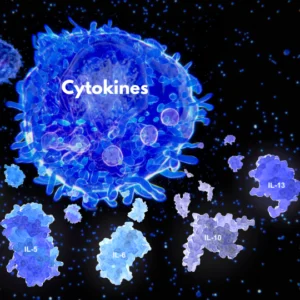
In reality, due to differences in expression levels of A1 and A2A adenosine receptors, their opposing effects and the fact that caffeine has very similar binding affinities for each receptor, predicting the impact of caffeine remains a challenge and is specific from person to person. Also, compared to caffeine, paraxanthine and theophylline have an overall higher binding affinity to adenosine receptors, while theobromine has a low affinity, so there is additional variability in caffeine’s impact depending on its exact metabolic configuration.
Phosphodiesterase inhibition
Caffeine also inhibits phosphodiesterase (PDE) activity, an enzyme which is responsible for the degradation of cAMP and cyclic guanosine mono-phosphate (cGMP) to their noncyclic forms 5’-AMP & 5’-GMP:
- PDEs 4, 7, and 8 selectively hydrolyze cAMP
- PDEs 5, 6, and 9 selectively hydrolyze cGMP
cAMP-phosphodiesterase inhibition may be a more important mechanism than adenosine receptor antagonism, but at high doses of caffeine, whereas low doses have more of an impact on adenosine receptors. However, as caffeine dosage increases, despite the effect on decreased cAMP production due to blocking of A2 receptors, the degradation of cAMP is also inhibited, so that cAMP levels are eventually preserved to a threshold, impacting all the effects mentioned above. This is how complicated biology is!
Calcium mobilization
Finally, high doses of caffeine also induce calcium release from the sarcoplasmic reticulum, through the activation of ryanodine receptors in skeletal muscles. This increases intracellular calcium and generates the process of excitation-contraction coupling more quickly, which favors the contraction of striated muscles.

The direct benefit in sports is obvious, where potential ergogenic effects of caffeine have been observed at doses of 400 to 600mg. The mechanism of enhanced physical performance and capacity may be due to:
- modified pain perception that trigger sustained motor unit firing rates and neuroexcitability
- augmented adrenaline levels, which enhance performance via stimulating the glycolytic pathway
The ergogenic response to caffeine is dependent upon attaining a 15-20 μmol/L threshold of circulating concentration when administrated before exercise, but could be lowered when ingested during workouts, as acute exercise itself increases adenosine receptor sensitivity.
Other side of coffee
Not all components in coffee exert positive effects though. For example, while also exhibiting anti-inflammatory and antioxidant actions, the diterpenes cafestol and kahweol present in coffee are known to elevate plasma low-density lipoprotein (LDL) and triacylglycerol concentration. Cardiovascular risk warning! Also, whereas N-methylpyridinium appears to be an activator of the Nrf2 pathway as potent as caffeoylquinic acids, trigonelline suppresses the activation of Nrf2, the main antioxidant pathway in the body. The lower content of trigonelline in dark roasts though, fits with the observed stronger activation of Nrf2 by dark roast coffee. So there are ways around that!

Ready for the next coffee sip, or darn confused already? There’s no ‘one size fits all’ here either. Choose between light and dark roasts depending mainly on your taste preference. It seems that darker roasts balance the increased carcinogenic compounds that result from the Maillard reaction taking place at higher temperatures with increased antioxidant compounds, so at the end of the day light and dark roasts are equally safe. Preparation choice should mainly depend on the degree of cardiovascular risk, with cafestol and kahweol being present only in unfiltered coffee. But you know what? Simply go enjoy your coffee responsibly and you should be fine!
